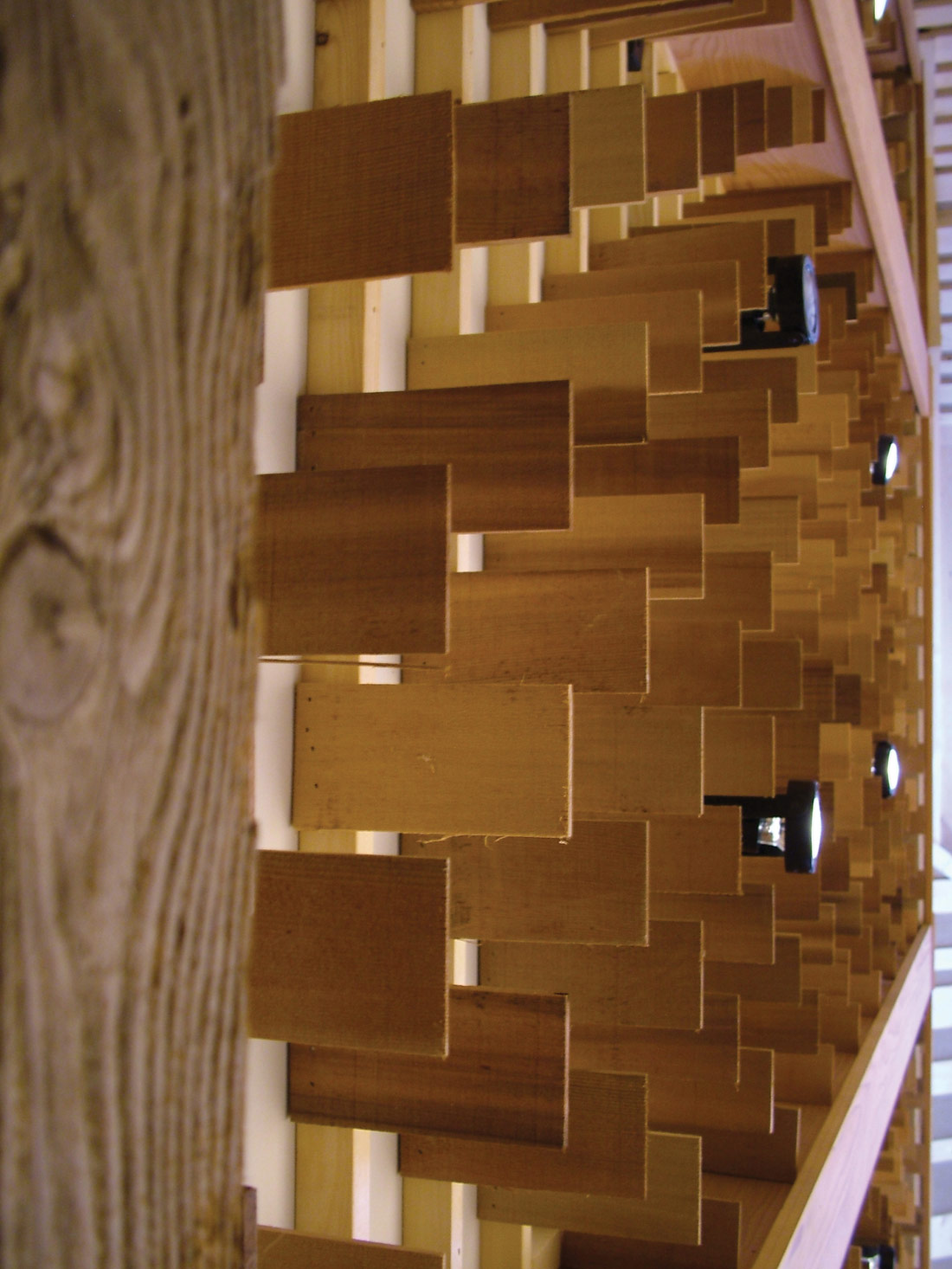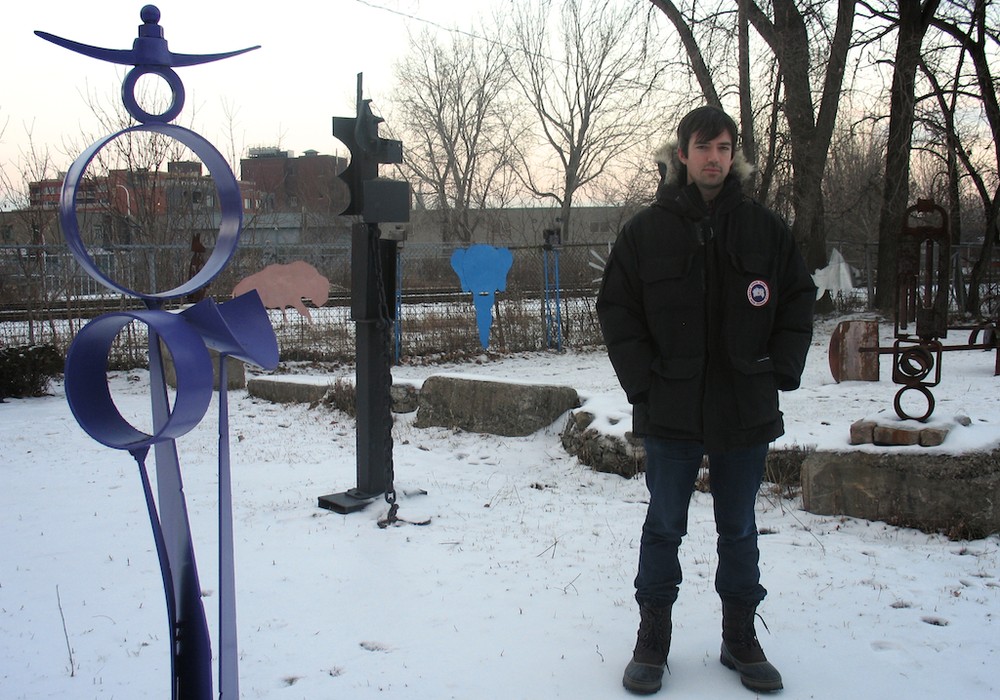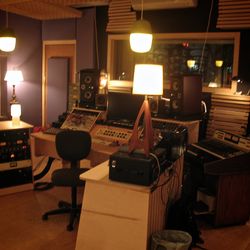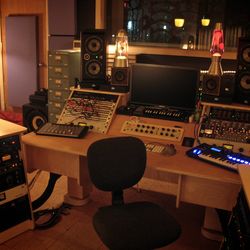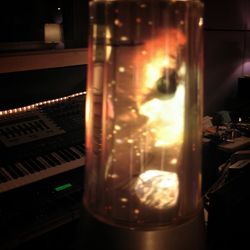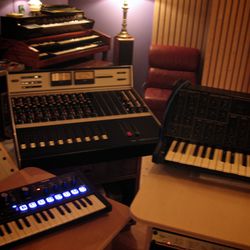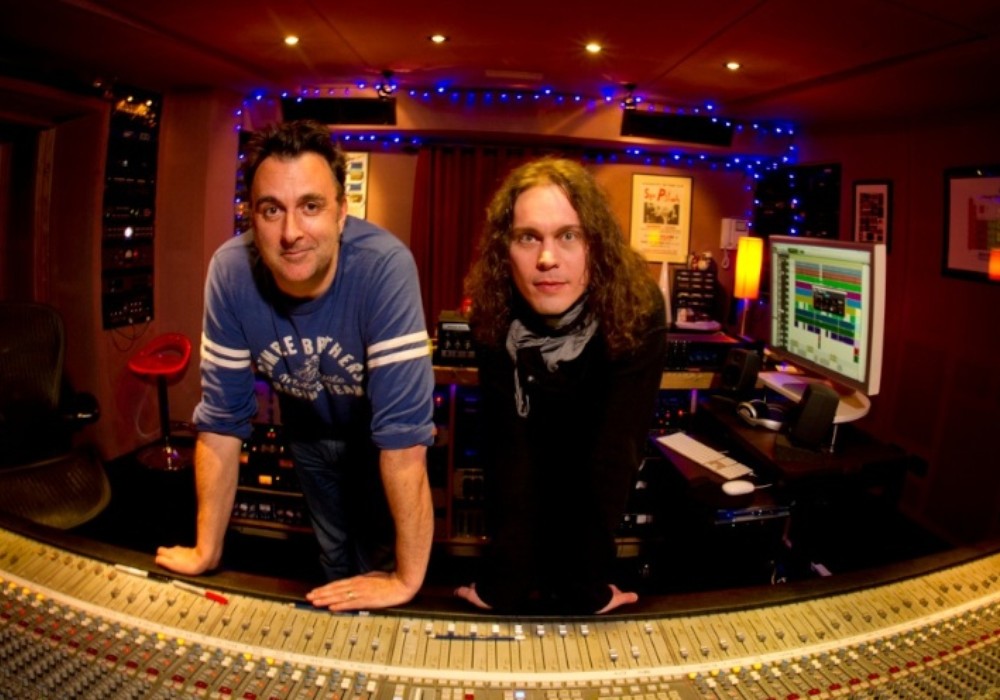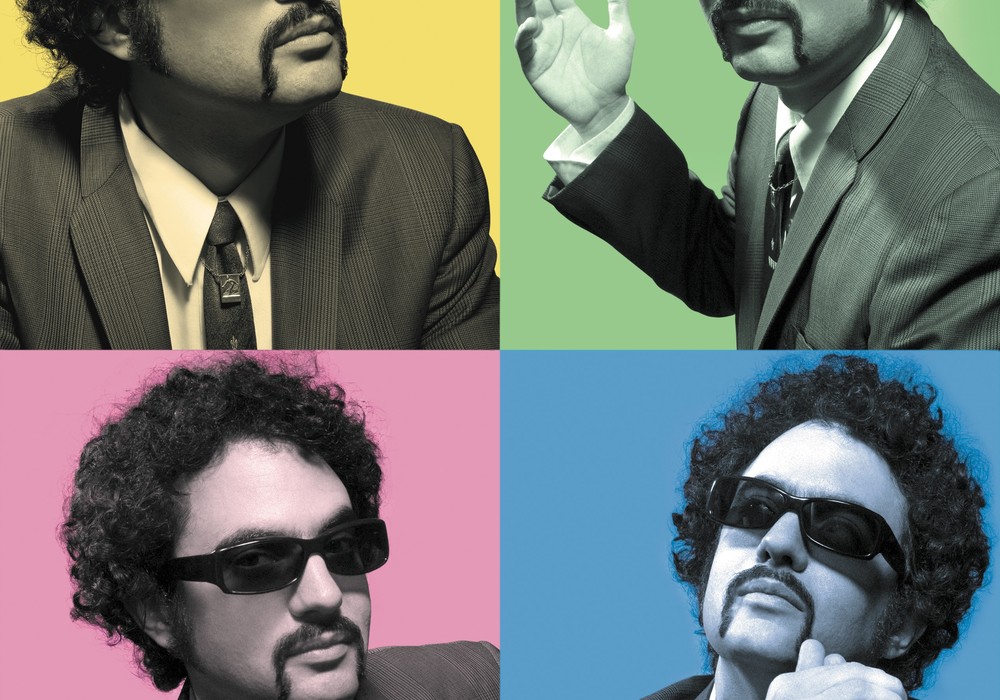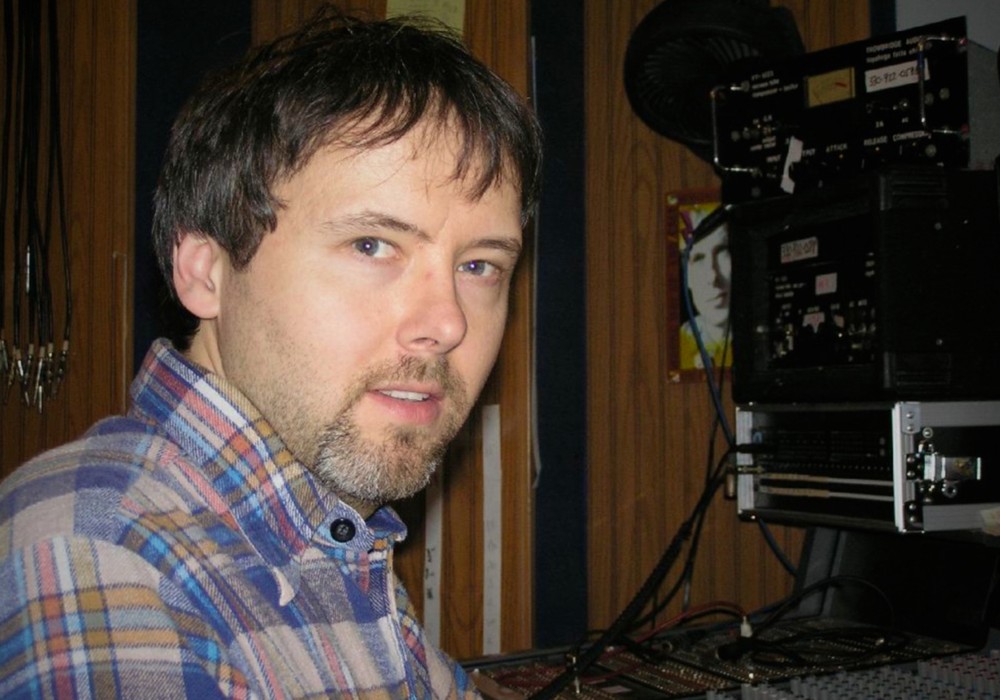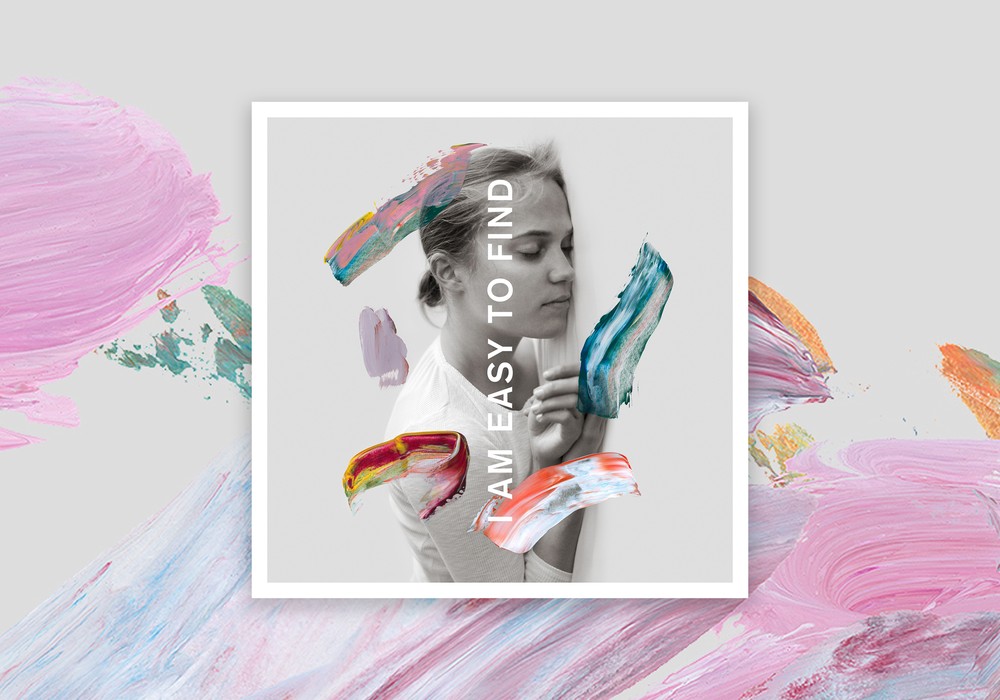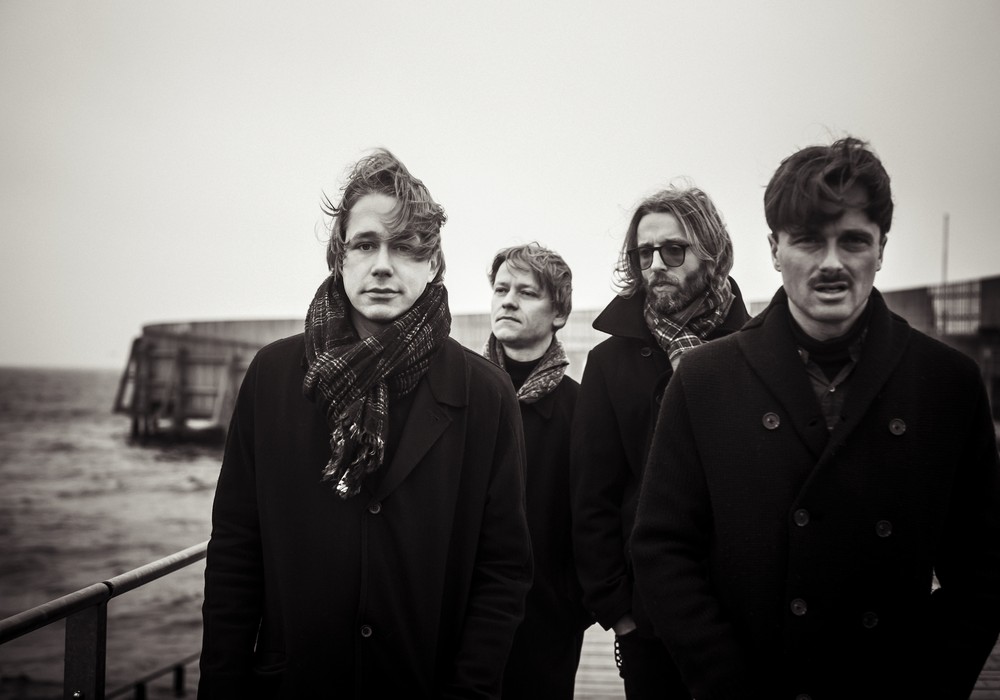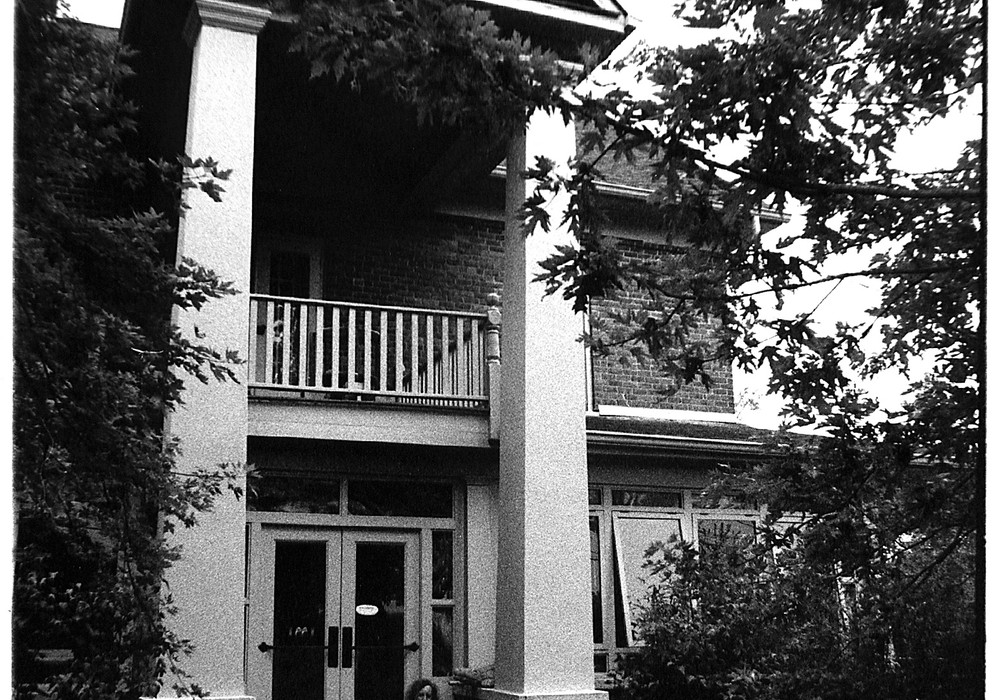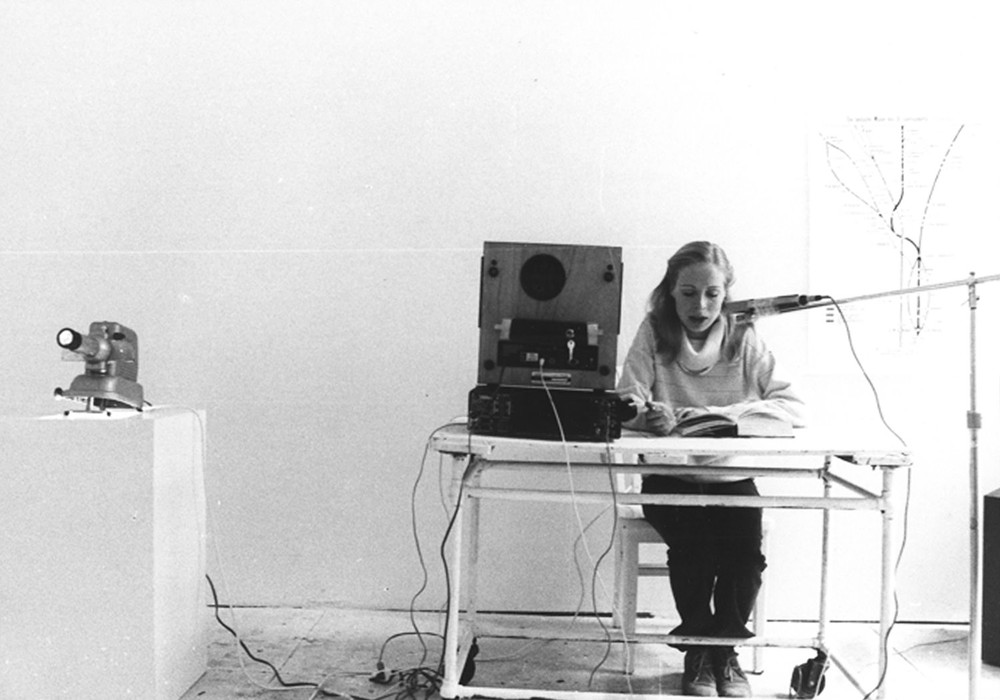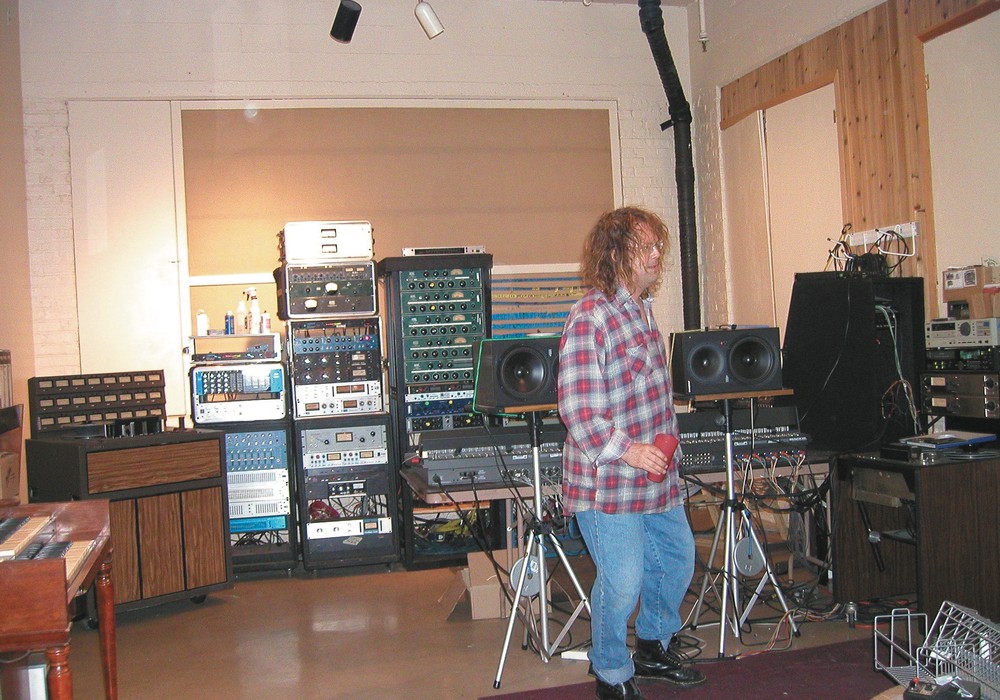For years I'd get brief emails from Damian Taylor. He might be in some remote location or some major metropolitan center, making records with a wide variety of artists. Frequently he'd have some specific, interesting question; some of which I could answer. When I found out he'd settled in Montreal, I knew I had to drop in at his new studio, Golden Ratio, and finally figure out where he'd come from and what his thoughts were about making records. Damian has worked on an extensive and highly creative number of albums with Björk, but also significant sessions with The Killers, Prodigy, U.N.K.L.E., Frou Frou, Austra, Trust, Diamond Rings, Gotye, Arcade Fire, and many others. And most curious to me was the way he does work, jumping in and out of production, writing, mixing, programming (both kinds), editing, and engineering; and in the end offering his clients the ultimate collaborator.
Tell me a little bit about your studio, Golden Ratio. One thing that I thought was really cool is the raw plywood on the floor, and then the use of plywood on the diffusion and absorption panels, and then the fact that a lot of the furniture looks like it's raw plywood.
Yeah, I think there's the simple fact that it's quicker to put up raw wood as you don't have to treat it, but I really like the feel of having raw materials in a studio. They reflect light in a lovely way and help offset all the technology we surround ourselves with. The contractor who ran the build suggested Russian birch ply for all the acoustic treatment for its workability and quality. Aesthetically it was right on point for me too as it's nice and light with a subtle grain and texture. The floors are two layers of a more rugged ply floated on 5-inch thick dense fiber pads, it's a very simple and effective way to float, rather than the whole rubber puck palaver. It's also very easy to add channels for cabling and all that good stuff. This year I finally got to put in custom racks and a desk, they were made by a brilliant company in Toronto called 2Egress who share a lot of my values, including a love of Russian birch. About half of the furniture in here is stuff I salvaged from the the side of the road or charity shops, then restored and modified. If I find something that's made from really good solid wood I don't mind stripping back layers of paint to get to it, though I had a couple of pieces waiting for close to two years for me to get the time to do it. I think it's nice having a lot of imperfections and character, both in recordings and in the furniture. I've been in so many studios that are gray or black or navy blue, with furniture seemingly made with the same cookie cutter, most of them have no windows to the outside world and can become profoundly depressing places to spend extended periods of time. I wanted to create a place with a warm, open, energizing and nurturing energy, where you could watch the weather come and go, the seasons change, but critically, which would also feel really good at night. I'm crazy obsessed with lighting and the impact it has on the mood of a place, all the materials in here work with the light in an incredible way. At night the whole place glows and it's easy, inspiring, and fun to work though till dawn. When I was originally considering building my own place I first thought I'd just set up more of a project space, where I could make a ton of noise and do basic recording, then head elsewhere for anything really serious. But after I started consulting with John Brandt, who took care of all the acoustic and technical design, I realized that I could make this place my favorite studio on the planet to mix, and that I could lay it out to suit my own ways of working. Essentially I really love recording performances and real "acoustic events" and I really love having those combined with hyper-real, un-real, or sur-real programmed elements. Like it or not, the programming side of things is very time consuming. Almost all the studios I've been in before with good recording facilities tend to suffer from control rooms, which exclude performers from the technical process — the glass is a significant philosophical and cultural barrier as well as an acoustic one. I wanted my control room to have plenty of room for performers, I want them to feel welcome in here when I'm nerding out. I also like to be able to record well in this room too — so the control room here is known more as the "main" room as it's where most of the stuff happens. It just means that even though programming can still be very time consuming, it's more of an inclusive vibe. There's enough space in this room to easily have at least four players in here with instruments and mics all set up, plus people in the live room and echo chamber. I also have artists who have set up a second studio for themselves in the live room, so we can both be working at the same time. Diamond Rings wrote a lot of songs next door in between vocal takes!
I noticed the tie lines around.
Yeah, there are XLR, TRS and ethernet tie lines on every single wall, then a couple have USB to link in with some of the more modern keyboards. There's also DSub and speaker ties going into the echo chamber and live room — just incase! My aim is to be able to have absolutely everything plugged in all the time so anyone can play anything and we can hit record immediately, or if they bring in an instrument they're really close to a panel where we can plug in microphones or otherwise tie them in. I also further modified the desk and racks by adding additional tie lines into their structures, so if you put anything on top of them you can plug in a foot or two away. Before I finally got the 2Egress furniture and expanded my patchbay, I'd have to spend a couple hours reconfiguring everything depending on what I was doing — if I was writing and programming I'd pull all the keyboards in to surround me, for example. The next day I'd be mixing with a client and you'd have to clear all that away — total pain in the ass and it led to a lot of procrastination. Actually this all leads into the main reason I don't like to have a big console: turning things up or down, EQing, or bussing them, is probably less than 10% of what I do, if you could average out my moves across a year. If I were just mixing or just tracking live players, then I'd most likely have one. But sometimes I'll spend a few months purely working on music writing and programming, where I hardly have to do any of the basic engineering moves, so it would be pointless having this massive object dominating the room. Sonically they don't make enough of a difference either, despite all the hype. The setup here has worked really well in terms of the balance between vibe, engineering capabilities, acoustic spaces, mix accuracy, and instruments and programming nerd toys. That's actually the reason I called the place Golden Ratio; because all these factors feel perfectly in proportion to me. But as a straight up recording studio, I've had phenomenal results with the spaces in here.
I didn't know how much of a second recording space you'd have, because I figured you were kind of control room-oriented too.
Yeah, that kind of ties in to what we were saying earlier; I'm known for a lot of the high tech stuff I'm into so it's easy to imagine I don't record, however my roots from a very young age were in live playing and ensemble performance. I want to capture that aspect of music properly too. This is also part of why I moved to Montreal — there are fantastic and original players here. I've been really lucky to have Jeremy from Arcade Fire come in a lot to play drums for me, it's just been a revelation compared to trying to spend three days programming a wicked drum track that you don't want to end up sounding too electronic anyway. I love his playing. Not having to break my workflow to go to another studio where I could get a decent drum sound is a huge benefit here too. I've had great results with everything I record in there: pianos, horns, guitars, vocals, and percussion. Just being able to have that little entrance hall as an echo chamber is an awesome thing too. John Brandt figured out a way to configure the rooms so that the entrance hall between the main room and the control room has really good dimensions, it's got no absorption but quite a bit of diffusion. So the live room is very tight and controlled but with a really solid low end, then you can leave the doors open a crack into the echo chamber and throw mics up there to get a great live reverberation, it's like having a "huge" fader when you record, but it's not so long as to get all blurry. Regine from Arcade Fire wound up recording a lot of her vocals for their new album in the hall too. I don't have it as fully set up yet as I'd like: I really want to have a bunch of different speakers and mics wired up permanently so that when I'm mixing I can pipe sounds through the room quickly.
Have you done much re-amping?
A reasonable amount, I tend to do it more with pedals than amps, but I also really like recording a sound through my studio monitors to get a bit of depth. I've just got a bunch more DIs, another reamp output, and I finally have this little Ward Beck console set up as a sidecar to my modular synth. With the patchbay reworked and more I/O from my computer I'm having a lot more fun throwing stuff through all of this. That was the other thing: I didn't have all of my power lines finished up for some time after I moved in. That was part of what I was doing back in September when I got the new furniture, I'm still trying to figure out the exact best place for everything so that more instruments and more gear are permanently plugged in all around the studio. I'm working on iPad wireless control of Pro Tools so that I can go everywhere when I'm on my own. There are so many endless details to attend to to make a studio really really good, especially if you're trying to cover so many different aspects and styles of production. It's tempting to think you only need gear to make a good studio but the room it's in, how it's laid out, how it's all connected together, and how the space feels, are all critically important to me.
You mentioned earlier that you've built some of your own gear?
I've built quite a few of my own bits of outboard. I wanted to pay some dues by taking things right back to the original engineering reality, you had to build your own equipment before you could record! Building stuff is a good way to demystify the whole gear-voodoo hype. It's all part of the ongoing exploration for me. Cameron Craig was an amazing engineer to be around, because he was well versed in proper old school techniques and gear. I was in my very early twenties when I first started working with him as part of the UNKLE team. He first opened my ears to the differences between mic preamps and signal chains, just because he'd have a few with him. As well as whatever was in the studio, he had channels out of the Beach Boys' Universal Audio console, some Neves, and notably with him was the first time I ever heard a [Telefunken] V76. I was like, "What's that? It sounds amazing!" He was also the first engineer I worked with who had ribbon mics. That was the great thing about working with engineers the way I did back in the day. It was a really active, collaborative relationship and I learned a ton. Even though I was often receiving a programmer credit every sound ended up in my world, so I was much more in tune with the engineering process than I'd be if I was just running a MIDI sequencer in sync with the tape machine. I was young and I'd take the approach that I'm the first mate to their captain. I could stick your head around the screen any time and ask, "What the fuck was that?" I learned a lot through that, and also through their different approaches. The difference between someone like Cameron Craig and Neil McLellan was amazing; Cameron is this quite Zen, old-school engineer, while Neil was like the long haired "on acid while mixing" totally psychedelic vibe engineer.
He's an interesting guy.
Yeah, he's a really interesting character. Nobody else like him on the planet.
He's way appropriate for certain jobs.
Totally. The way that he would mix was inspiring, because it was always a performance. I don't mean like, "Now I'm going to cut this part, or turn that up" but rather if he was EQing a bass, he wouldn't go, "What are the frequencies in here, I wonder which ones I'll cut or boost." He'd do two passes and wiggle everything in rhythm, play the console almost like a synth, everything was musical and he'd get himself inside the sound. If he was trying a delay out, he'd always being playing with it live. The entire session was a performance from the first tweak to the final mix. He'd arrive at a mix and a balance as a result of all that jamming. Whereas Spike Stent, he'd go like "ploomp," and instantly there's a setting. He knew his shit so well, it would take him about three seconds to set a channel, while he was looking in the other direction. Al Clay was like that too, you'd be having a chat, then he'd say "okay let's print!" it seemed he was able to get a great mix just by turning up and sitting down. I also think that the attitude in England was great, no one had a sacred approach to engineering or gear; it was all about the results. Whatever works, works. No big deal. I don't know if it's just that I'm reading too much now, but I feel like there's a lot of overly hushed reverence; "Things have to be this way," or "This circuit was made then, and it's better than the one made now".
People can strive too hard to think in a formulaic way. You have to listen and react and be inventive.
Yeah, totally. Jim Abbis was great as an antidote to that. Unfortunately I only got to work with him on a few projects. We were on the same management for like six years, and I'd worked with him early on in my career and loved him to death. I spent six years harassing our manager asking, "Why aren't I working with Jim?" He had some really interesting outlooks. When he was coming up, he hadn't heard people mention a specific microphone preamp for ten or fifteen years! You went in, and there was a console, and there was a bit where you turned up the microphone. There were more important things to worry about. But Steve Osborne, for example, was telling me about a day off he had at a studio in the States, he decided to come in and shoot out every single preamp there.
To see what he thought of them?
Totally. I think we're in an interesting era because of the ease of access we have to information and ideas about recording. I've had so many questions raised that I wouldn't have even thought of otherwise. At some point you do have to investigate them if you're really serious about this stuff. Then you can make up your own mind. The biggest thing I've noticed about stressing out about gear is that as soon as I start making music, gear is the last thing I'm thinking of. I don't want to use a any outboard if it'll take another 15 seconds to patch in. I want to go, go, go, and have the focus be pure ideas. It is a funny dichotomy. I've realized that investing the time in getting your technical stuff totally tight means you don't have to think about it when it really matters. I also got fascinated about the idea that a lot of people would have a single setting they'd leave on a compressor all the time.
Oh yeah. A lot of engineers use that.
Yeah! It took me years to wrap my head around that. Like how would you do it? How could it be faster? Surely every sound is different? You start finding, "Oh, that really does work!"
You will find that you come back to certain settings quite frequently.
Totally. It gets quite abstract, but that approach to audio has gotten me to look at things in a different way. It's almost like looking at audio from inside the speakers instead of from outside the speakers, if that makes sense, like you're trying to push sound out in the room, and that guy's going out too far, so we'll sort of tuck it in here, and there are these barriers or limits that you press up against.
Oh, totally.
Instead of, "How can I get this to jump out and hit my ears?" It's hard to describe exactly. It's especially been interesting these last few years where perceived loudness is important, but we know that taking things and squashing the shit out of it sucks. Instead it's how can you get your things to jump out and be competitive in the mix while still being fat and able to translate. That's really affected the way I use compression. I've also wound up doing most of my mixing on Auratones super-quiet, and then I'll switch to the Focals like ridiculously loud for a few minutes and jump back down. In 2005 I set up a studio in Brighton and borrowed a big pair of Dynaudios to try out. I was mixing on them super loud and I loved it, but every time I put the mix on my laptop and listened, it sounded so shit that it wasn't even funny. That was when I really got the lesson about mixing quietly. I'd been traveling a lot for the year previous to the Brighton setup, so my laptop was the main system I listened to music on. Even though the speakers were minute I could perceive the bass really well, and I would know how the bass will sound on other speakers. So basically if something is going to sound exciting and powerful coming out of the laptop, it'll translate. Mixing super loud exclusively on bling speakers is the best way to make sure you won't translate. And let's be honest, most of us have a device or a computer now and that's how we come across new music.
Right, shitty ear buds, home stereos.
Yeah, exactly. It's like when they talk about the car stereo in the 60s, mixes were all 4 kHz because they had to come through a tiny mono speaker in the center of a car dashboard and be heard over the engine, or come out of a jukebox and be heard above the crowd in a diner or something. I think it's just the same philosophy. It's just a different delivery method or whatever. Now that I've got the family at home, if my wife and my daughter both wind up singing along to a song that's playing in a different room, then I know that it's a winner. It's become fascinating for me; how do you reach out to people in their lives instead of expecting them to immerse themselves in your world, to take the time out of their busy day to pay attention to your shit?
I think it's rare that someone will sit down and listen in between the speakers in perfect orientation.
Well, it's funny. You would always hear back in the day that so-and-so has a really nice stereo system, however I haven't heard a single person mention that at all in god knows how long.
How has your workflow with the laptop progressed?
I spent a chunk of time working with freelance sessions in London on whichever Pro Tools system happened to be in the room when I arrived. So it meant I was never really on a computer that I had spec'd out myself with all my favorite bits, but I got really good at getting mad result with the basics. From about 2004 I was able to have a laptop powerful enough to run many of my more esoteric pieces, so I could transfer audio into the laptop to do some wizardry then put it back in Pro Tools afterwards. I did quite a lot of work with DJs, and I also got a Grammy nomination for a remix I did with exclusively on my laptop in 2004. I started traveling a lot then too so I was interested in seeing how far I could go without even having a studio. Part of what eventually drove me crazy in London was that so many of the studios were so small, so you physically didn't have the room to set up instruments, let alone a group of players. The room Guy Sigsworth and I had at Strongroom was a small programming room with a tiny vocal booth, a very common setup in the UK. That's part of the reason why I moved to Canada, for the space. I got obsessed with having something, anything happening through a microphone, which is pretty reasonable, right? Even on more pure DJ oriented tracks. The reasoning is that, especially with software, everyone can get the same thing, but you're the only person with your particular acoustic space, so even if it's firing something through an amp or whatever, then great, you're making your own fingerprint. I dreamed of having a studio with a zillion speakers, where I could send everything to different speakers and create one sonic picture in real space. When I was living in B.C. I imagined building this studio that would be one massive room with speakers everywhere. Anyway, it didn't happen.
I assume you use plug-ins a lot.
I still mix on consoles now and then, but plug-ins, to me, have taken an exponential leap forward recently. I got the Waves Mercury bundle and was really impressed by some of their classic stuff, but more recently I got all of the UAD plug-ins and they blew my mind. I've started doing things with their stuff where, "Okay, we want everything in this to gel together," so I'll use exactly the same plug-in chains on every channel, and you get quite a startling unity in sound that I never expected to get with plugs.
You've created a console.
Yeah. They actually have a sound. Whether it's the same as a tape and a console, I really don't care, but it does unify things and it sounds right to me. On the opposite tack, if you're mixing and you want to create as much space and differentiation as possible, it's like, "Let's use entirely different approaches on every channel." That's been really, really interesting. Waves have a Helios EQ that completely changes the sound when nothing is boosted or cut, depending on what frequency is selected. So I don't know if it has a phase-shift thing, but I switched that on and fiddled with it then took it off again for like a year until I realized that, "Hang on, it works best doing nothing!" It makes a totally tangible difference, and I never thought I'd have that from plug-ins. And oddly enough I'm finding it's taking me a while to really get to understand exactly how different plug-ins can be used now, just like it has been with outboard, you learn their subtleties. That's part of why I was building a lot of outboard originally too, I didn't believe I could get the results I wanted unless I had a ton of analogue gear. But UAD in particular have dissolved that necessity. I spent maybe five years working up to building my studio and was very focused on knowing that I'd need the freedom to have my own place, then trying to decide how all of that was going to work. Part of the reason that I wanted to build all of that stuff as well was that I figured I wouldn't be able to afford to have a full-time tech on hand, so if my console goes down...
What things have you built period?
I build three LA-2As, or versions of, and I put different caps in them to see if I noticed — and ironically I've never actually properly A/B'd them yet; I just got on and used them! Then I did a version of an SSL bus compressor, the G-SSL thing that's a classic DIY circuit, but I did one that's fully optioned out with frequency selection on the sidechain, there's a full stereo sidechain, and there's all these different mods you can get, but I wanted them all at the same time, so getting them all to work was a nightmare. I started out with the Seventh-Circle preamps that Andy Hong recommended, I still love them to bits. My monitor controller is a relay-switching one from a circuit by guy in Israel. I just finished up versions of the REDD47 preamp and a 175B compressor, then there's a ton of half finished stuff in my cupboard.
Had you done soldering and things like that before?
Not at all. I just figured it out. I love learning. I was always a nerd at school. When I was 14 I built a hovercraft in my bedroom for some reason. A small one. I think that doing music production is an absolutely amazing way to use up a lifetime, because on one hand you can be totally emotional and subjective and creative, while on the other hand, you can go like, "Oh, I wonder what that thing does?" Then you can dive down some geeky rabbit hole and get really obsessed with something. That was the stupid thing about building this room. You go, "Okay, I'm going to need some tie lines." Then you start looking at tie lines or what kinds of cables you're going to put in, and it's like, "Oh my god!"
There are no simple answers.
Right. Very deep rabbit hole! I was so grateful when I sent you that email about patchbays. I was like, "What patchbay do you use?" You gave me a straight answer. So that's the one I got. It works great. Saved me weeks of stressing on the internet.
Do you have an outboard summing setup?
You know, I don't. I mixed an album at The Warehouse in Vancouver, which is an amazing studio. They're so good. You'd say, "Can we hire in a Fairchild?" They'll bring in two stereo Fairchilds, and they're like, "Pick whichever one suits the track best." They're amazing. It was ridiculous! I printed stems at the end of each mix incase the artist needed them for live stuff. We went to master with Emily [Lazar, The Lodge], and she was like, "Do you have your stems?" I was like, "Yeah, if you want them." We A/B'd the stereo console mix against the stems, which were summed internally in Pro Tools. We've done this on quite a few tracks with different artists, and every single time I pick the Pro Tools stem sum by a long, long way.
Really?
Yeah. Opposed to a mix that's done on a console where you have your 2-track mix from the stereo output. There could be weird stuff, like if it's hitting the two-bus compressor a little bit differently, or maybe individual elements aren't bouncing the same way, but they always feel bigger and wider. Really not subtle. A really good friend of mine in England, Matt Robertson, did some mixes and printed A/Bs that were either summed in the computer or on a console. He sent them out to a few of us totally blind and all of us picked the Pro Tools mixes. I'm not saying that the summing is better or worse, but it's the least of my worries right now and I've looked into it enough to not lose any sleep. I'll mix on a fucking rubber band if you want me to. But if you want it mixed now, and then you want to phone me up in two weeks and ask me to turn up a thing a tiny bit and then change your mind three days later, then...
How much recall-type stuff do you end up with?
A lot. It's very rare that it's anything drastic, but I really do like the fact that an artist can take their record away and live with it for a bit after we mix. I really want them to be happy with it. With clear notes it'll only take ten minutes per song to do the tweaks and another ten minutes to print. Then they're happy with the record and they can tour with it for two years. On the flipside, I had Katie Stelmanis from this band Austra in last week to record vocals for their new album. They'd been on the road non-stop. I mixed her first album which is a really great record. After we had finished up any little tweaks, she had a few queries after mastering about things that she was unhappy with. It wasn't the mastering engineer that I'd wanted to use but the label wanted him. I wound up advising her, "At a certain point, it really doesn't matter anymore. Just go out there and promote the shit out of your records. The label will be happy with what they've got and they'll get behind it. Maybe our unmastered mixes had half a dB more low-end, but everyone can still sing along and you've got more important battles to fight now." It's a fine balance, but we all have a finite amount of energy and at some point you have to let it out into the world. An artist has their entire career to tackle — recording is only one aspect. We need to remain aware of that when we work with artists. People like Björk or The Killers, they don't want to be beholden to physics, or trivial matters like space and time. With Björk it was fun, we set up to mix at this place in Brooklyn called Atlantic Sound. It's actually on the East River and has a big plate-glass window in the front with an amazing view. She wanted a studio with a window and daylight which was a very good call. It's quite an indie studio, and Diko, who runs the place, is totally great. He's been really improving the studio for years since we first went in. Anyway I'd get the mixes to a good point exclusively in the computer, with the plan that later we'd spread them out on the console. Björk had so many factors to juggle for the project and she was bouncing between me in the control room, Matthew Herbert on a setup in the live room, and her right hand man James Merry who would handle the zillion emails and requests and details she'd need to make calls on. She'd have an idea, walk into the control room and go, "Hang on, I want to go look at that other mix right now." So you could go click, click, and go to another song. The next time she'd come into the room and be like, "Why aren't you using the console? We're paying this money to be in here, and why aren't you mixing on that?" I'm like, "Because we can switch songs instantly every time we need to!" It's so easy to forget the constraints of analogue once you get used to all the benefits of Pro Tools. But the instant recall priority is totally fair enough, because with her by that stage of the project, or with The Killers on the last few months of their record, there's this whole massive fucking machine that's in place, your press is already booked in, you're doing a video shoot coming back and forth to the studio, and you're having to rehearse your band. In Björk's case, it was coordinating app developers on three different continents in four different time zones! The artist has to be able to come in and go, "I just need this changed. Can you do it? Great. How does it sound? Cool." Done. Instant. I love mixing on a console with endless outboard, but I love getting the record right more. Having said that though, once Björk's mixes were in a good place, Diko and I split them out through the console, and printed a bunch of stuff where it was either going to tape and back, the console and back, or both. Then Björk could come in, sit down, and hear instantly the sonic difference and pick which one she preferred there and then.
Right.
The bizarre thing I'm finding is that it seems to be like the more of a budget that artists have, the less inclined they are to spend it on a studio. The Killers didn't want to mix outside of their own place, for example. Their studio worked really well for them, but I really didn't get on with their control room for mixing, and the mixes Steve Lillywhite was trying in there didn't translate at all and didn't make the album. So I made sure I had time to try a ton of mix stuff out here at Golden Ratio. I'd get a mix to a point where I knew I was happy with it — I knew that it was solid and that all of the parts were working together and all the frequencies and relationships were where they should be. Most importantly I'd have had the chance to get to know all of the relationships within the sounds. Their engineer, Robert Root, made a duplicate of my Pro Tools system at their place in Vegas, so I'd then take my mix down there and then we could pull it apart and stick it back together until the band were happy. Then weeks later I could get an email from the band in the middle of the night, open the mix up here again and do .3 dB nudge on the first syllable of the second chorus or something like that, and send it straight back to them.
Right, exactly. So your studio is about two years old now?
Yeah.
You said that it's acoustically designed. Did you have someone help you?
Yeah, I actually found a guy on Gearslutz believe it or not, it's the last thing in the world I expected. His name is John Brandt and he's been absolutely phenomenal. I originally tried phoning up John Storyk and all those guys, and saying, "Look, I'm trying to build a humble place for myself," and they said, "We don't touch anything under $100,000." I was like, "Fair enough." That was when I was thinking of just doing a simple production space rather than a world class studio. This space was originally all totally open into the warehouse in the front, I was the first tenant in here after it was converted from the old underwear warehouse. There's no one above, and no one on that side. I knew that the one thing I wanted above any gear was a room that I could trust. That's the thing that's most difficult to try and explain to people who don't mix. I want to hear what's coming out of the speakers. That became my primary concern over anything else, and I figured I'd just ensure the fundamental dimensions of the rooms were right because I could build any size or shape I wanted. John Brandt is quite a character, he's from the States but when he got married he moved to Indonesia so became internet based. He wound up writing all these fiery, no-nonsense books about DIY studio construction. I just liked his attitude and started talking with him, it turns out his expertise goes far beyond the DIY world he was writing about and he ended up designing me rooms that are easily on a level with anywhere I've ever worked on the planet. Originally I thought that I'd hire him just to do the basic dimensions of the rooms, make sure we had even modal distribution and so on, and do the simple build. But he kept sending more and more drawings, like, "Oh, here's the rear-wall diffuser. Here's the slant traps. These space couplers are going to go there. What would you like to do about these windows? Where do you want to run your tie lines? Shall we float your floor?" I suddenly realized, "Wow, if I don't have to go somewhere else to mix or record, this could be a really big deal for me." So we did it properly. It wound up being well over five times more expensive than I was originally planning, however it's at least ten times as good and has been the best money I've ever spent. This location is great too, because I'm right across the road from the Hotel2Tango [Tape Op #47]. They've got my favorite "everybody set up and play together" room in the world, so if I want to do a more traditional session that doesn't suit my place I have the perfect complement right there. I did a string session there years ago when I had a couple of days off on Björk's tour. I'd actually read the article on Hotel2Tango in your magazine, so I wrote ahead, and they were like, "We're booked up eight months in advance." But it happened that I was going to be in town during a maintenance week, so Howard [Bilerman] squeezed me in for a day. On tour I was writing all this music on my laptop. I missed oxygen molecules vibrating, so I just told Howard, "I want to record some people in a space. Who have you got?" He said, "I can get you a good string quartet." So I got Sigrún Jonsdottír, who played trombone in Björk's band and violin otherwise, to do all these string arrangements. It was a great session. Howard also walked me around the neighborhood and introduced me to everything. He totally hooked me on this place.
What is it with Montreal? Even cheaper food is pretty good.
It's the Francophone thing, thank god. No, it really is. It's fundamentally different to Anglophone culture, though Quebec can't be lumped in with France any more than you can lump in the States with England. The Quebecois really value lifestyle, and food is a big part of that. I came here halfway through a world tour with Björk, and Montreal really struck me because it has strong North American elements and strong European elements, but it's really got it's own vibe, it's alive. Howard was walking me down the street to a coffee shop, and it was like Prague or Berlin combined with Paris, on acid. But in the New World. Globally it's in a great spot for me too — halfway between London and LA, and an hour on a plane from New York.
It's very residential too.
People actually live here. It's a place where you live and work. Most modern cities have one place where you work and then a different place to sleep. I love the way how it's all super-pedestrianized, which is really rare in North America. It's a great place to live, and also very family friendly. Interestingly enough, one block from here over on Bernard, two record shops opened up last year, totally against the trends everywhere else. From the studio you're one block away from a zillion and one different restaurants, bars, book shops, record shops, it's lovely. After close to a decade in London, I find Montreal is a really exciting place to be, it's not a jaded or cynical city either. I've found it can be creatively draining being in a significant business city, like London or LA, when you feel the commerce breathing down your neck. I totally love and am fascinated by the business side of music, but I prefer going to LA or New York for a week or two and totally immersing myself in meetings and sessions and running around like crazy. Then I come back here to my cocoon and it's a really nurturing, inspiring creative place, where you're not thinking too hard about business. I have to compartmentalize the two sides. There's the odd indie label in town, but it's like what I hear of Portland, where everybody's playing each other's bands. Reykjavik is like that as well, fantastically creative. If you want to do something, you can get everybody together quickly and make it happen. You're not expecting the head of Columbia or EMI or Sony to walk in. You don't give a shit, and paradoxically you tend to make more interesting, more original stuff.
